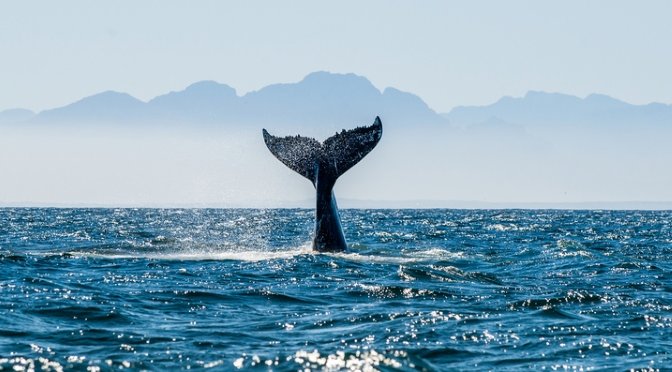Whales are the largest creatures to have ever lived – bigger than the dinosaurs, and any animal walking the earth today. From the gentle giant that is the blue whale to the charismatic singing humpback, these are intelligent animals with intricate social behaviours. The chance to see them in their natural habitat is a genuinely moving experience, and in northern Europe, Scotland is something of a whale watching hotspot. Read our guide to find out where you can spot whales following your ferry to Scotland.
Where to go whale watching in Scotland

Mull
The second largest of the Inner Hebrides off the rugged west coast of Scotland, the Isle of Mull is a superb whale-spotting destination – particularly between the months of April and October. The most common sight in these waters is the minke whale, a beautiful deep purplish-black rorqual known for the trademark white motifs on its pectoral fins. Excursions sail out regularly from Mull Island throughout the season – and if you’re lucky, you might even witness one breach out of the water. If you’d rather stay on dry land, the island offers up plenty of viewing points on a clear day. Try your chances from Carsaig, Callaich Point or the Ardnamurchan Peninsula – just across from Tobermory, the Isle of Mull’s capital. And whales aren’t the only star wildlife attractions; golden and white-tailed eagles are noted residents, and you might spy a raft of Eurasian otters by the coast.
Orkney
Further north, the waters off Orkney are a well-known habitat for an apex predator – the orca, or killer whale. Both of its names have an interesting origin. Orcinus orca, to give them their full Latin name, means “whale of the kingdom of the dead” – but they are actually the largest species of dolphin. They are killers of whales rather than whales that kill. In the wild, the orca’s dorsal fin juts proudly up from its back – unlike those in captivity, which often flop to the side. Between May and September, pods of up to 150 can be spotted off the coast off Orkney, capable of swimming at speeds of over 50km/h.
Moray Firth
Northeast of Inverness is the Moray Firth, one of the UK’s most noted areas for whale and dolphin spotting. Bottlenose dolphins and harbour porpoises are regular sights here, while common dolphins and minke whales are also known visitors. Pilot and northern bottlenose whales have also been seen here on occasion – and there have even been rare reports of the magnificent humpback whale too. Most cetacean visitors migrate here during the summer months – so time your arrival for then too.
Things to know before you go

Bottlenose dolphin leaps out of waters off Coll Isalnd, Inner Hebrides, Scotland
It’s easiest to spot whales breaking the surface of the water (and below!) on a calm day, so try to arrange your trip when wind speeds are low. If you’re staying on land, be patient; you should allow at least half an hour at your chosen viewing point to give the whales a chance to show. Be sure to pack a pair of binoculars – whales may surface some way from the boat, after all. It’ll generally be colder out at sea than on land, so bring along windproof and waterproof clothing. And as well as established tour operators, don’t be afraid to ask the locals for tips, who are always happy to share their knowledge.
Other coastal wildlife in Scotland

In mid to late summer, Basking Sharks can be seen around the Hebrides. These are the second largest species of fish on the planet at up to 12 metres long (around 40 feet), but don’t worry – they’re plankton feeders and pose no danger to humans. Fowlsheugh nature reserve in Aberdeenshire hosts over 130,000 birds during breeding season, including puffins, kittiwakes and razorbills. And both grey seals and common seals can be found bobbing in the water and sunbathing on Scottish beaches.
Ready to go whale watching in Scotland? Book our Larne to Cairnryan crossing today!



